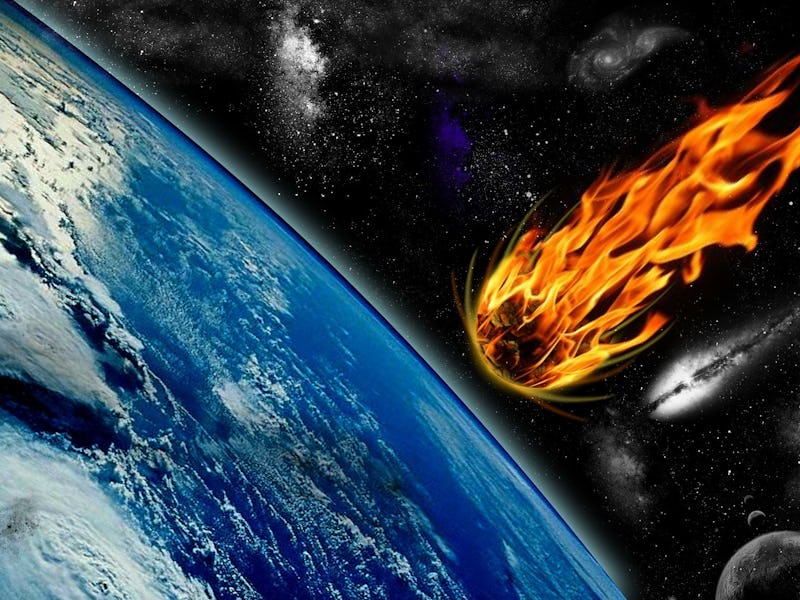Missing Nanodiamonds Undermine Ice Age Comet Impact Theory
It looks like humans are to blame for killing off the wooly mammoths after all.

About 12,900 years ago, one — or several — comets collided into Earth, sending the planet into a deep freeze that lasted a millennium. It wiped out dozens of species of large mammals, including the spectacular wooly mammoth. It’s a tidy theory, one that fits with what we know about the end of the dinosaurs.
But the more people review the evidence, the less it appears to hold water. Two new studies published Wednesday in the Journal of Quaternary Science refute two separate lines of evidence that have been used to float the Younger Dryas impact theory. One argues that microscopic diamonds — each smaller than a bacterium — previously identified as the “impact layer” in the geological record were misidentified, and are actually a different sort of carbon crystal structure. The other looked at river sediment deposits from rocks of that age that had been used to argue for a large fire event in the aftermath of an impact. Those researchers found that any charred material was from regular Earthly fires, and not an extraterrestrial and cataclysmic one.
These studies, taken together with other criticism, poke a gigantic hole in a theory that let humans off the hook for the mass extinction of large animals around the world. Without these lines of evidence, it’s pretty hard to deny that Homo sapiens were wreaking havoc on ecosystems long before the industrial revolution.
It's hard to avoid the conclusion that humans are to blame for the demise of the wooly mammoth.
We know that parts of the world got suddenly colder during the Younger Dryas, a geological period that lasted about 1,200 years. Glaciers, which had been retreating as the Ice Age lifted, switched course and began to advance. Over a matter of decades, temperatures over Europe and Greenland dropped by several degrees.
A very large comet impact could have produced this change, with enough dust and ash thrown into the air to prevent a portion of the sun’s energy from reaching the planet. In 2009 Science published a paper by researchers who claimed to have found nanodiamonds, which could not have been formed by normal Earth conditions, at the geological boundary marking the Younger Dryas, at several sites in North America.
Tyrone Daulton, a physicist at Washington University in St. Louis who studies nanodiamonds from stardust, was dragged into the debate by a reporter for Science who asked his opinion on the research. He said at the time that nothing in the paper definitely confirmed the presence of diamonds. He says now, after completing his own analysis, that what had been identified as tiny diamonds were actually crystals of graphene and graphane that looked remarkably similar.
This isn’t the first serious hole in the comet impact theory. Around the end of the ice age, large animal species went extinct in an astonishing fashion. But it seems that these extinctions did not happen all what once, like you would expect for a giant cataclysm. Indeed, the loss of megafauna correlates better with the arrival of humans in an area than a particular moment in time. The climate change of the Younger Dryas period would have stressed these animals, but it seems likely that human activity pushed them over the edge.